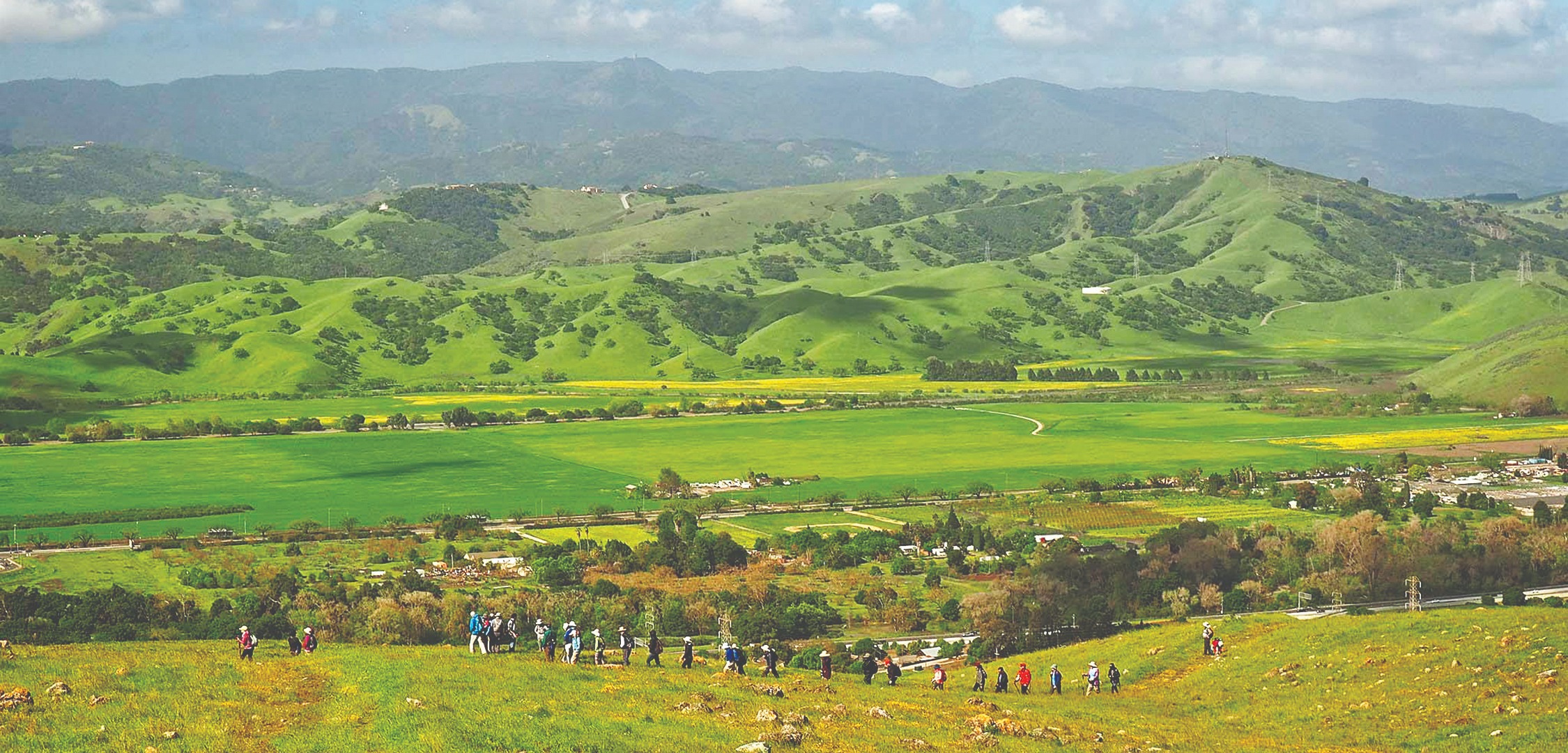Máyyan ‘Ooyákma - Coyote Ridge offers a truly one-of-a-kind preserve experience. With its cultural significance, crucial role in preserving endangered habitats, and remarkably diverse ecosystem, it holds countless captivating stories to share – tales of people and their connection to the land, a continuing journey of habitat restoration, and stories of resilience.
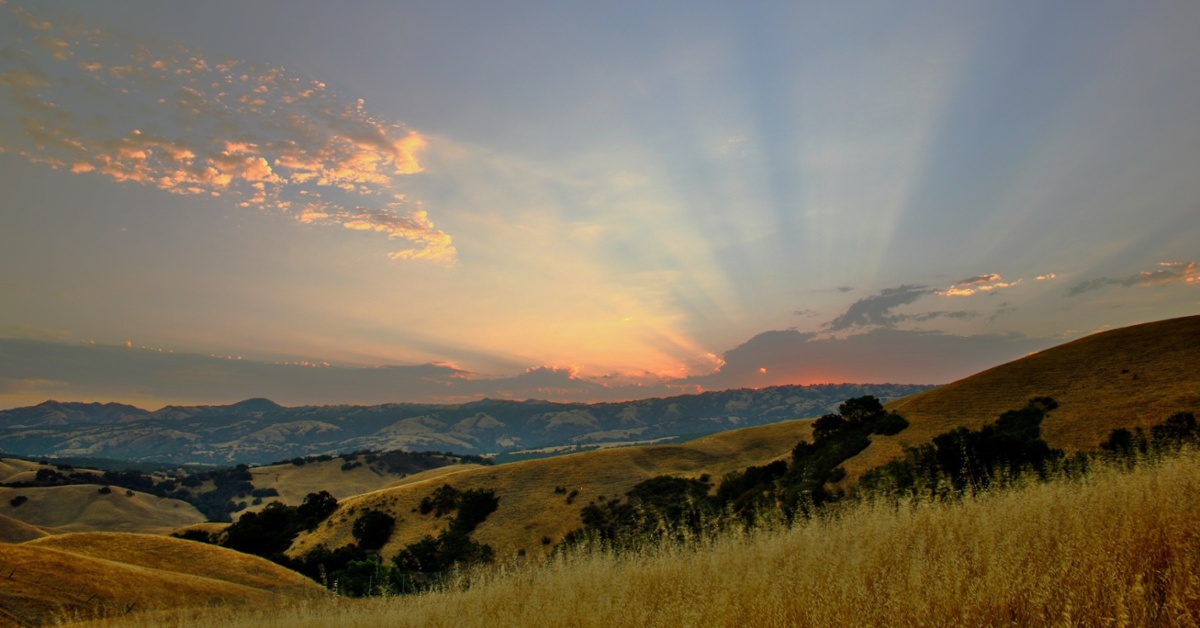
Setting the scene
As visitors arrive at the preserve, they will be greeted by inviting shade structures that offer a welcomed cool respite from the sun's rays in a mostly treeless landscape where local species have adapted to thrive in the hot, dry, nutrient-poor soils. These structures provide the perfect spot to relax and take in breathtaking views of the expansive Santa Cruz and Diablo Mountain Ranges as well as to learn about the preserve from interpretive panels. A multilingual dashboard provides a valuable resource, offering essential information such as a handy map of the preserve, and the very first interpretive panel titled "This Land is Home."
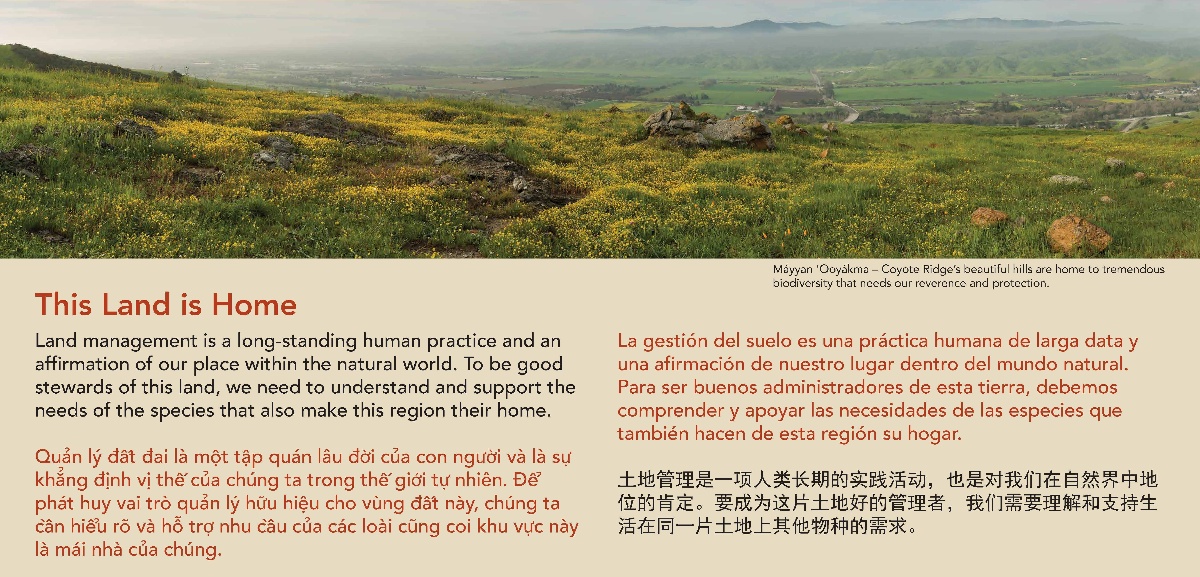
This multilingual panel sets the stage for a unique outdoor experience, providing visitors with a comprehensive overview of this open space preserve. It ties together the essential landscape management practices, the remarkable adaptations of endemic – or living only in this region -- and drought-ready plants, the interconnectedness of habitats, the distinct serpentine soil, and the ongoing threat posed by human impacts.
The Original Stewards
For millennia, Indigenous Peoples relied on Coyote Creek watershed and its adjoining oak woodland habitat, managing the landscape through controlled burns. Today, the Muwekma Ohlone Tribe of the San Francisco Bay Area continue to thrive in the Bay Area as active participants in the ecological care of the region.
The name "Máyyan ‘Ooyákma " (pronounced My-yahn Oiy-yahk-mah) derives from the Native Chochenyo language and translates to "Coyote Ridge." To learn more about the fascinating origins and significance of this sacred land, check out our article here.
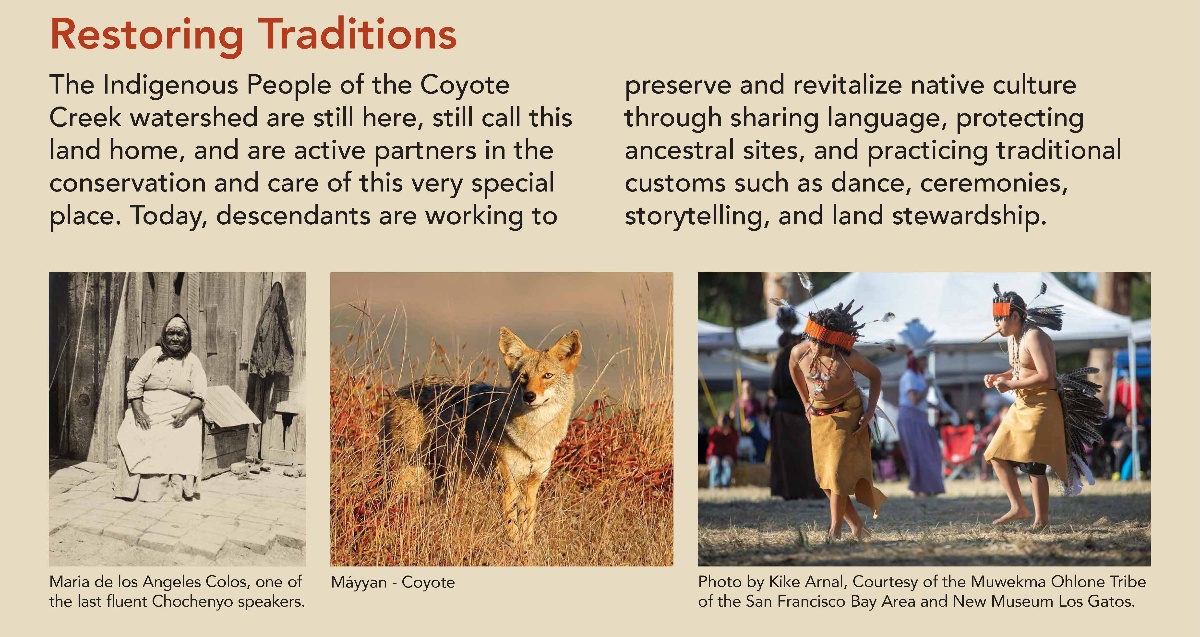
Located in the central gathering area near the parking lot, visitors will have the opportunity to explore two informative panels dedicated to the ancestors, descendants, and current members of the Muwekma Ohlone Tribe. These panels provide valuable insights into the rich history, heritage, and ongoing efforts of this remarkable Tribe, who have persevered to safeguard their language, culture, and connection to the land.
Critical Partnerships
In addition to partnering with the Muwekma Ohlone Tribe, the Open Space Authority partners with a diverse range of organizations that played vital roles in the acquisition, planning, and development of this unique open space preserve. As visitors make their way to the panel at the far end of the central gathering area towards the Bay Checkerspot and Máyyan Wáyyi trailhead, they will have the opportunity to delve into the fascinating story of how this preserve came to life.
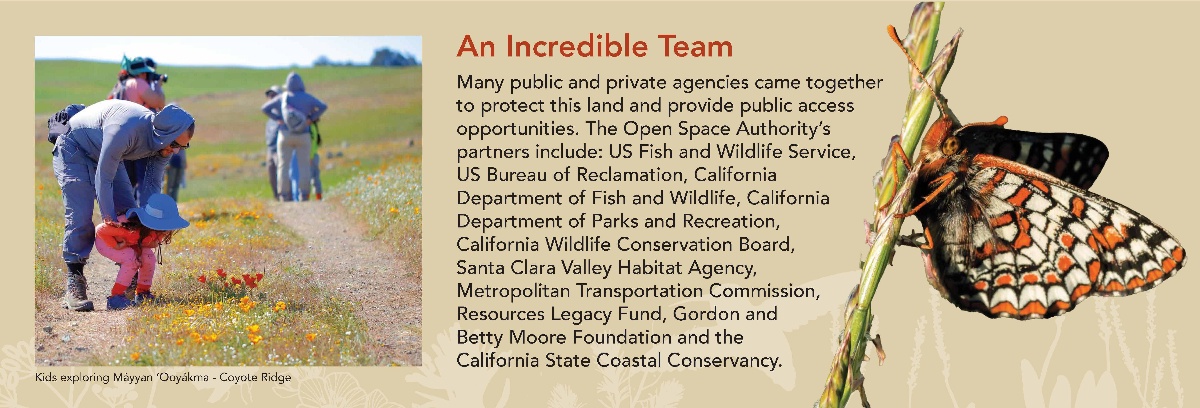
These partners include U.S. Fish and Wildlife Service, U.S. Bureau of Reclamation, California Department of Fish and Wildlife, California Department of Parks and Recreation, California Wildlife Conservation Board, Santa Clara Valley Habitat Agency, Metropolitan Transportation Commission, Resources Legacy Fund, Gordon and Betty Moore Foundation and the California State Coastal Conservancy.
Unique Habitat, Rare Species
While strolling to the top of the accessible Máyyan Wáyyi (this translates to Coyote Valley and is pronounced “My-yahn Why-ee") Overlook Trail, visitors will come across interpretive metal bands at the ground-level just before reaching the scenic overlook of Coyote Valley. These features highlight the incredible species that rely on this endangered ecosystem to thrive.
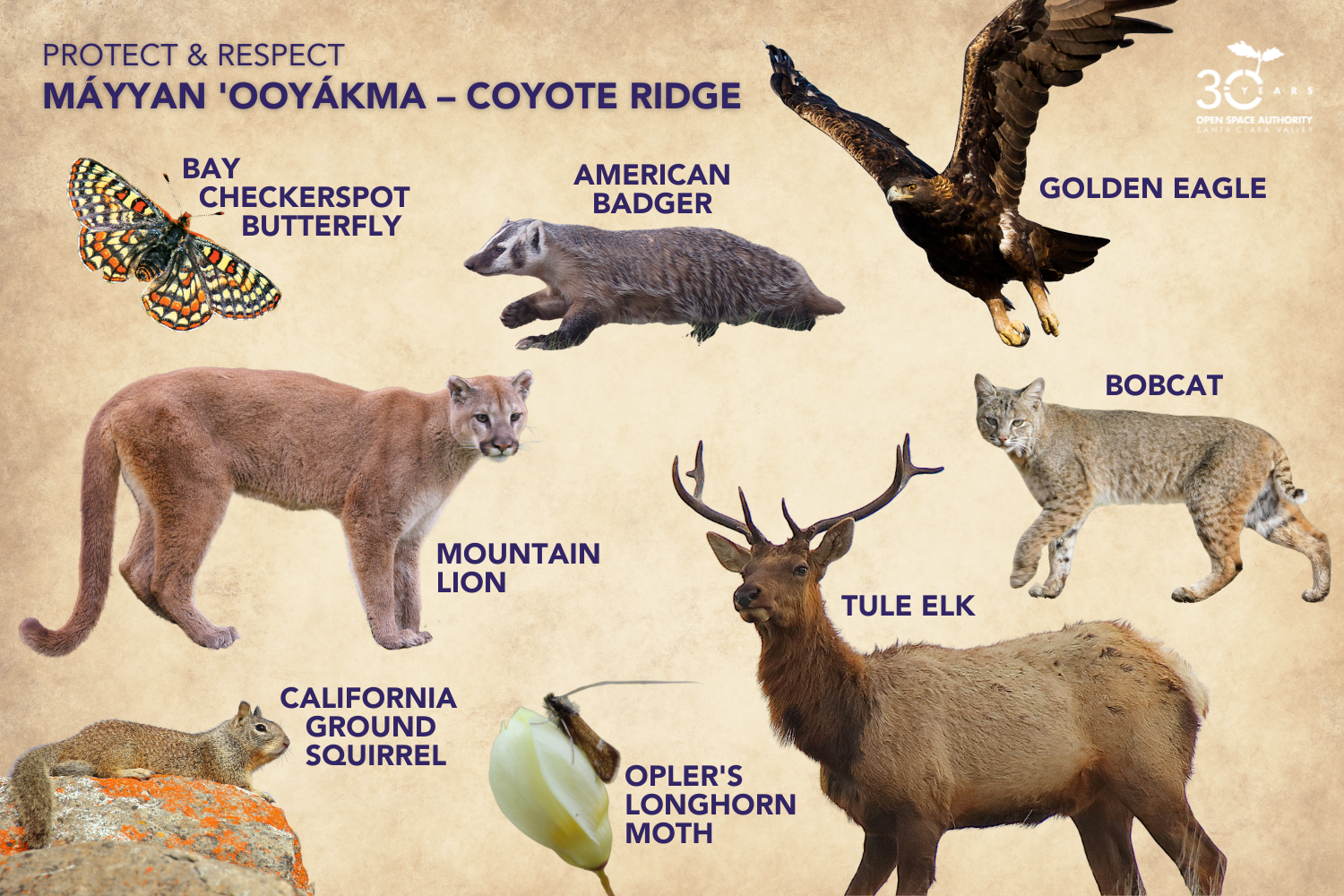
A Crucial Corridor
As visitors make their way away from the central gathering area, they will learn that Máyyan ‘Ooyákma - Coyote Ridge is situated at the closest connection point between the Santa Cruz Mountains and the Diablo Range, making it a critical passageway for wildlife. Native wildlife, such as bobcats, depend on expansive territories. However, when they venture across roadways like Monterey Highway, their explorations unfortunately expose them (and people) to the danger of traffic collisions. Tule elk, a species that was once critically endangered, also depend on landscape connectivity throughout the Diablo Mountain range for their seasonal movements.
The panels at this location also provide valuable insights into the dietary habits and behavioral patterns of bobcats and tule elk.
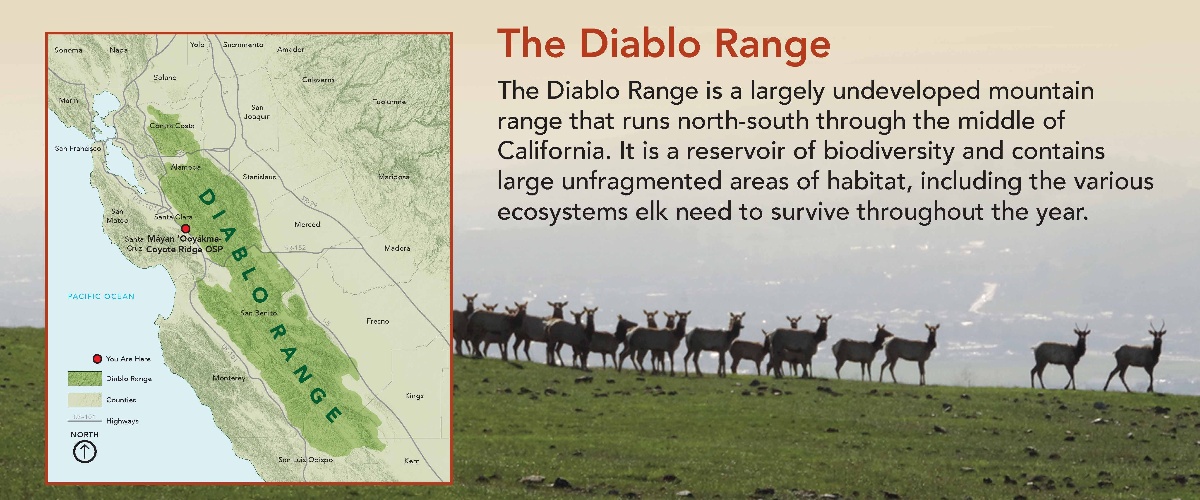
Upon reaching the overlook, visitors can take delight in a cozy rest area where they can relax and enjoy their next fascinating interpretive experience while enjoying views of Coyote Valley and downtown San José.
Water is Life
When visitors head away from the staging area and embark along the Serpentine Spring Trail, they will enter the Habitat Protection Area and come across informative panels that unveil the fascinating narrative of water on the ridge. This unique and vital habitat, a result of the rare serpentine grasslands found here, sits at the heart of the preserve's exceptional ecological significance. A Butterfly Pass is required for all visitors hiking in this section of the preserve.
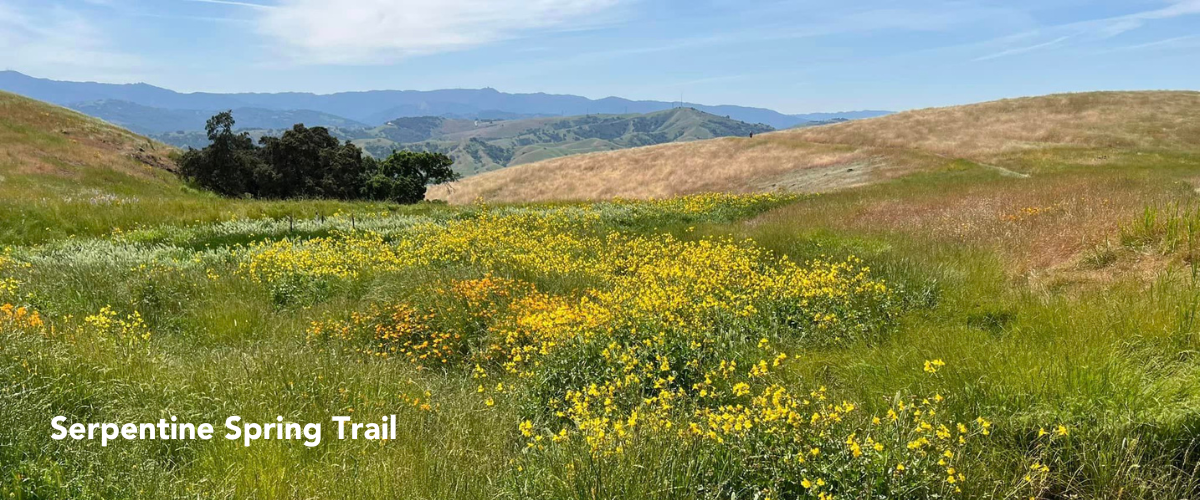
In this habitat, similar to other serpentine ecosystems, water is in short supply. Plants such as the Santa Clara Valley dudleya have evolved unique adaptations, like growing in rock crevasses, to thrive in this challenging environment. Visitors can rest on the bench to the left of the panels and enjoy the views all around them.
Taking Flight
Embarking from the other side of staging area, visitors will find the trailhead for the Bay Checkerspot Trail. With another 1.5 miles of the trail built by Open Space Authority field staff and volunteers, this trail adds a total of 2.5 new miles to the Bay Area Ridge Trail network. Its serpentine grasslands offer fantastic wildflower viewing every spring, and habitat for unique local species like the acorn woodpecker and western meadowlark.
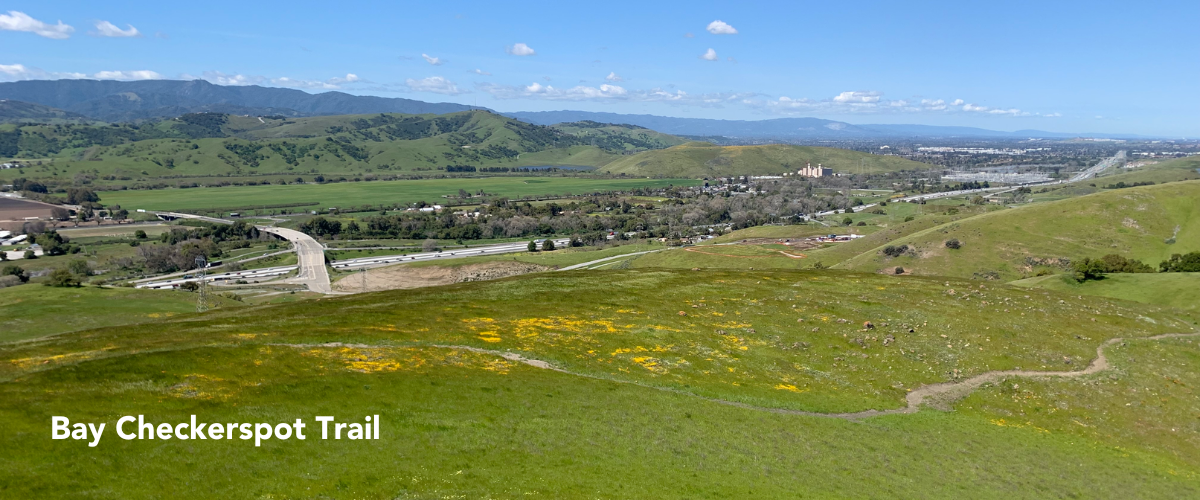
These birds are Máyyan ‘Ooyákma residents all year long. The acorn woodpecker stores acorns during the fall to sustain themselves during the winter, while the Western meadowlark eats insects in the summer and seeds, berries, and grains throughout the winter. The songs of both birds can be heard from the trails, creating a fantastic soundtrack for your outdoor adventures.
Big Picture
Máyyan ‘Ooyákma - Coyote Ridge’s serpentine habitat – made of serpentine rocks – is incredibly rare, and this landscape itself is under threat from human influence. Located just a stone's throw away from the highway, the ridge is exposed to air pollution from traffic. The nitrogen emitted by cars and a nearby powerplant acts as a fertilizer on the landscape, causing grasses to grow at an accelerated rate, which poses a risk to native species. Therefore, responsible management practices, such as conservation grazing, and continuous research of this ecosystem are of utmost importance. Click here to watch an educational program by Dr Stu Weiss who has studied this rich landscape since the 1980s.
If visitors make the journey halfway along the Tule Elk Trail (also designated Bay Area Ridge Trail), they will be greeted with breathtaking views of the surrounding mountains and a final panel that beautifully ties the land management story of this preserve together.
This preserve has countless stories to share, and we have only just begun to uncover them. The Open Space Authority is thrilled to bring these stories to you now and in the future.
To visit the preserve, sign up to get your Butterfly Pass here. For everything else you need to know, visit our Guide to Accessing Máyyan ‘Ooyákma – Coyote Ridge.
